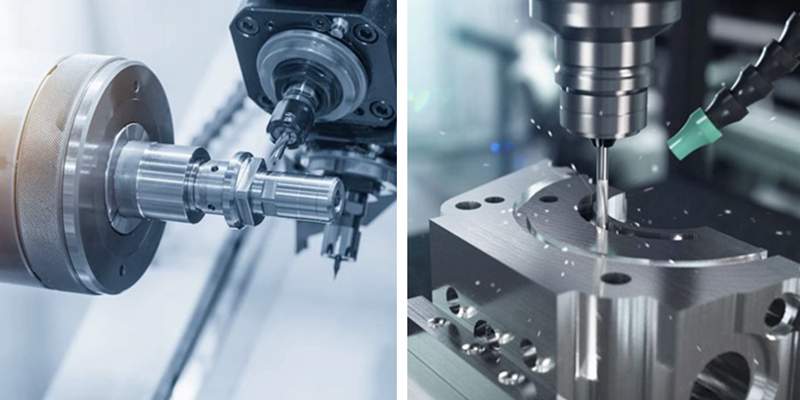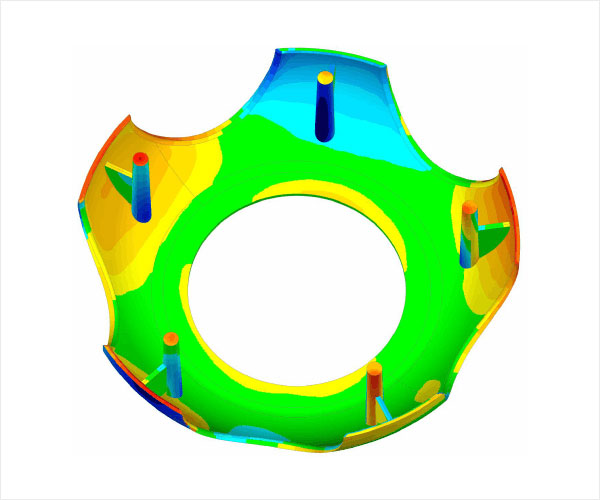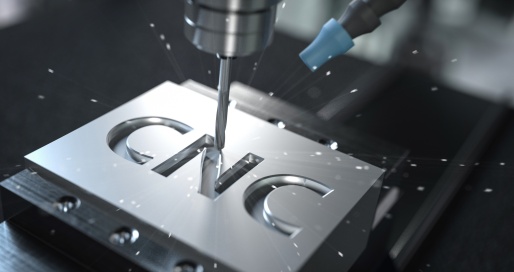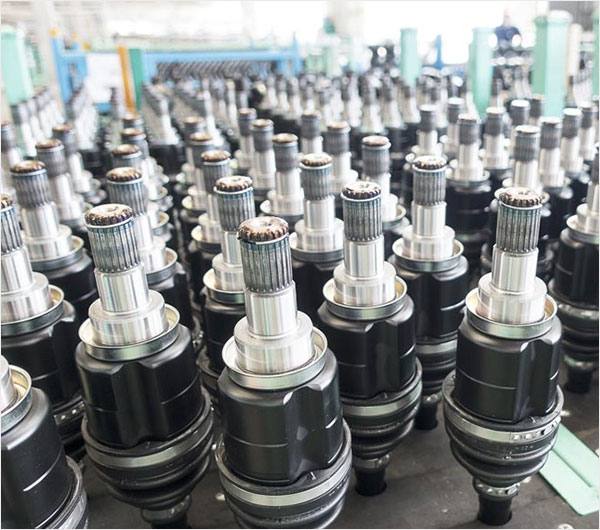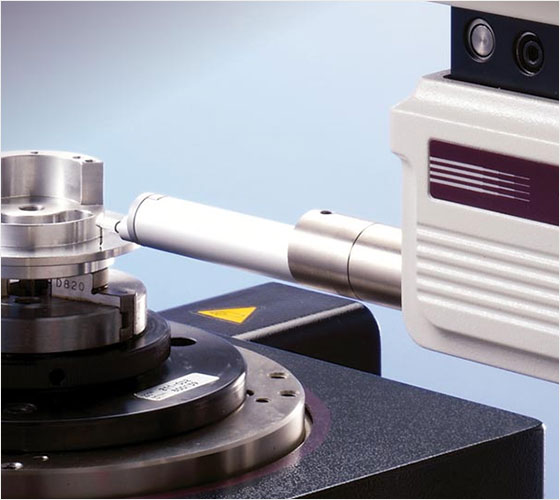Introduction:
In the realm of manufacturing, precision is paramount. Choosing the right technique can make or break a project. Enter CNC turning and CNC milling, two cornerstones of precision machining. Understanding their nuances is crucial for engineers, designers, and enthusiasts alike.
Understanding CNC Turning
CNC turning, also known as lathe machining, involves rotating a workpiece while a cutting tool shapes it symmetrically. This method is ideal for creating cylindrical or tubular components.
Decoding CNC Milling
CNC milling, on the other hand, utilizes rotary cutters to remove material from a workpiece. This subtractive process is versatile, allowing the creation of intricate shapes and patterns.
The Advantages of CNC Turning
CNC turning offers several advantages, making it a preferred choice for specific applications:
High Precision: CNC turning ensures remarkable precision, vital for components requiring tight tolerances.
Cost-Efficiency: It is often more cost-effective for producing cylindrical parts in large quantities.
Quick Turnaround: The simplicity of CNC turning leads to faster production times, crucial for time-sensitive projects.
The Benefits of CNC Milling
CNC milling, with its diverse capabilities, is favored for various reasons:
Complex Geometries: Milling can create intricate shapes and designs, catering to diverse project requirements.
Versatility: It can work with a wide array of materials, including metals, plastics, and composites.
Efficiency: CNC milling machines are highly automated, ensuring efficient and consistent production.
What Sets Them Apart?
While both techniques involve material removal, their fundamental differences lie in the approach:
Rotational vs. Linear Movement: CNC turning rotates the workpiece, while milling moves the cutting tool linearly across the workpiece.
Tool Orientation: Turning tools cut from the outside in, while milling tools can cut from various angles, allowing for more intricate designs.
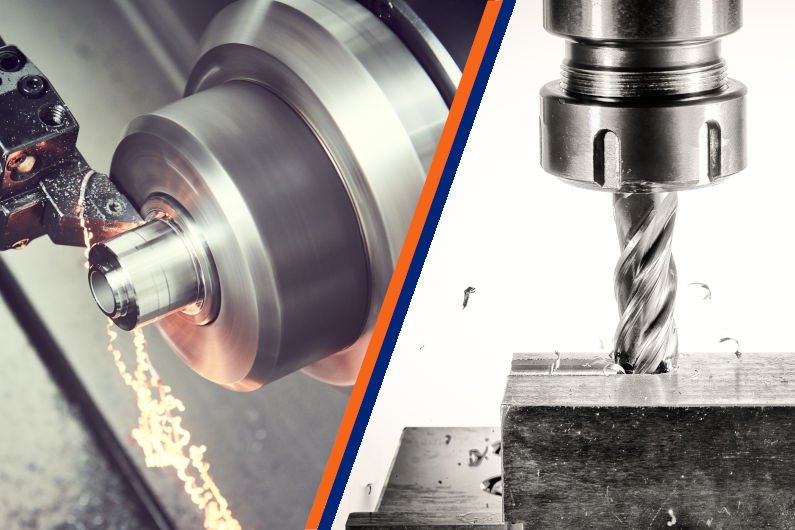
Frequently Asked Questions (FAQs)
Can CNC turning and milling be used interchangeably?
While they share similarities, the choice depends on the specific project requirements. Turning is ideal for cylindrical parts, while milling offers versatility for complex shapes.
Which technique is faster?
CNC turning generally offers quicker production for cylindrical components due to its simpler process.
Are CNC turning and milling environmentally friendly?
Both methods produce waste, but proper recycling practices can minimize their environmental impact.
Can these techniques be automated?
Yes, both CNC turning and milling processes can be fully automated, enhancing efficiency and accuracy.
What materials are suitable for CNC turning and milling?
CNC turning and milling are versatile machining processes that can work with a wide range of materials. The choice of material depends on the specific requirements of the project, including factors like strength, durability, conductivity, and cost. Here are some common materials suitable for CNC turning and milling:
Metals:
Aluminum: Lightweight, corrosion-resistant, and has good conductivity. Ideal for aerospace and automotive components.
Brass: Offers excellent machinability and is corrosion-resistant. Commonly used for decorative and electrical applications.
Steel (Various Grades): Durable and widely used for various applications. Different grades provide different properties such as hardness, toughness, and corrosion resistance.
Stainless Steel: Resistant to corrosion, staining, and rusting. Commonly used in medical, aerospace, and food processing industries.
Titanium: High strength-to-weight ratio, corrosion-resistant, and biocompatible. Used in aerospace, medical implants, and sports equipment.
Copper: Excellent electrical conductivity, used in electrical and electronic components.
Bronze: Durable, corrosion-resistant, and has good thermal conductivity. Suitable for bearings and bushings.
Plastics:
Acrylic (PMMA): Transparent, lightweight, and durable. Commonly used in signage, displays, and optical components.
Nylon (Polyamide): Tough, abrasion-resistant, and chemical-resistant. Used in gears, bearings, and mechanical parts.
Polycarbonate: Impact-resistant and transparent. Suitable for safety glasses, protective shields, and automotive components.
Delrin (Polyoxymethylene): Low friction, wear-resistant, and stable dimensions. Ideal for gears, bushings, and sliding components.
Polyethylene (PE): Lightweight, chemical-resistant, and low-cost. Used in packaging, containers, and industrial applications.
Other Materials:
Wood: Soft and easy to machine. Commonly used in furniture, decorative items, and prototypes.
Composites: Materials like carbon fiber composites are lightweight and strong, used in aerospace, automotive, and sporting goods industries.
Ceramics: Hard, brittle materials used in specialized applications where high wear resistance and thermal stability are required.
When choosing a material for CNC turning and milling, it’s important to consider the material’s properties, the complexity of the machining process, and the intended use of the final product. Additionally, the CNC machine’s capabilities and tooling options play a crucial role in determining the suitable materials for a specific project.
How do I choose between CNC turning and milling for my project?
Consider the complexity of the component, required precision, material, and budget constraints. Consulting with experts can provide tailored solutions.
Conclusion: Making Informed Choices for Precision Machining
In the intricate world of precision machining, knowing the difference between CNC turning and milling is pivotal. Each technique brings unique advantages, catering to diverse project needs. By understanding their intricacies, manufacturers can make informed decisions, ensuring the success of their endeavors.



